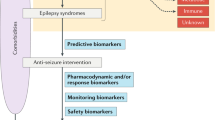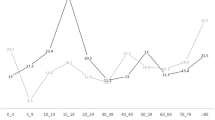Abstract
Of the 50 million people with epilepsy worldwide, around 80% reside in resource-poor countries, which are ill-equipped to tackle the enormous medical, social and economic challenges posed by epilepsy. The capability to identify people with epilepsy and provide cost-effective care is compromised by widespread poverty, illiteracy, inefficient and unevenly distributed health-care systems, and social stigma and misconceptions surrounding the disease. Several studies have reported that a large proportion of patients with epilepsy in resource-poor countries never receive appropriate treatment for their condition, and many, although diagnosed and initiated on treatment, soon discontinue treatment. The high cost of treatment, a lack of availability of antiepileptic drugs, and superstitious and cultural beliefs contribute to a large epilepsy treatment gap. A substantial proportion of the current burden of epilepsy in resource-poor countries could be minimized by educating the public about positive features of life with epilepsy, informing primary and secondary physicians about current trends in the management of epilepsies, scaling up routine availability of low-cost antiepileptic drugs, and developing cost-effective epilepsy surgery programs. A comprehensive epilepsy care model should consider the marked heterogeneity of the disorder and its variable effects on the patient, family and community.
Key Points
-
Resource-poor countries carry an enormous burden of epilepsy
-
A substantial proportion of patients in resource-poor countries never receive appropriate treatment
-
This treatment gap can be minimized by educating primary care physicians on how to diagnose epilepsy and administer phenobarbital treatment
-
Few of the epilepsy surgery programs in resource-poor countries have produced results comparable to those in wealthier countries
-
Epilepsy care programs in resource-poor countries must adjust to local sociocultural, political and economic scenarios
This is a preview of subscription content, access via your institution
Access options
Subscribe to this journal
Receive 12 print issues and online access
$209.00 per year
only $17.42 per issue
Buy this article
- Purchase on Springer Link
- Instant access to full article PDF
Prices may be subject to local taxes which are calculated during checkout

Similar content being viewed by others
References
Kale, R. Global campaign against epilepsy: the treatment gap. Epilepsia 43 (Suppl. 6), 31–33 (2002).
World Health Organization. Epilepsy in the WHO Africa Region, Bridging the Gap: the Global Campaign Against Epilepsy “Out of the Shadows.” (WHO Press, Geneva, 2004).
World Health Organization. Atlas. Epilepsy Care in the World 2005. (WHO Press, Geneva, 2005).
The World Bank. World Bank list of economies (July 2008). http://siteresources.worldbank.org/DATASTATISTICS/Resources/CLASS.XLS
Begley, C. E. et al. Cross-country measures for monitoring epilepsy care. Epilepsia 48, 990–1001 (2007).
Forsgren, I., Beghi, E., Oun, A. & Sillanpaa, M. The epidemiology of epilepsy in Europe—a systematic review. Eur. J. Neurol. 12, 245–253 (2005).
Theodore, W. H. et al. Epilepsy in North America: a report prepared under the auspices of the Global Campaign against Epilepsy, the International Bureau for Epilepsy, the International League Against Epilepsy, and the World Health Organization. Epilepsia 47, 1700–1722 (2006).
Mac, T. L. et al. Epidemiology, aetiology, and clinical management of epilepsy in Asia: a systematic review. Lancet Neurol. 6, 533–543 (2007).
Burneo, J. G., Tellez-Zenteno, J. & Wiebe, S. Understanding the burden of epilepsy in Latin America: a systematic review of its prevalence and incidence. Epilepsy Res. 66, 63–74 (2005).
Preux, P.-M. & Druet-Cabanac, M. Epidemiology and etiology of epilepsy in sub-Saharan Africa. Lancet Neurol. 4, 21–31 (2005).
de Bittencourt, P. R. M. et al. Epilepsy in the tropics: 1. Epidemiology, socioeconomic risk factors and etiology. Epilepsia 37, 1121–1127 (1996).
Jallon, P. Epilepsy and epileptic disorders, an epidemiological marker? Contribution of descriptive epidemiology. Epileptic Disord. 4, 1–13 (2002).
Sridharan, R. & Murthy, B. N. Prevalence and pattern of epilepsy in India. Epilepsia 40, 631–636 (1999).
Radhakrishnan, K. et al. Prevalence, knowledge, attitude, and practice of epilepsy in Kerala, South India. Epilepsia 41, 1027–1035 (2000).
Wang, W. Z. et al. The prevalence and treatment gap in epilepsy in China: an ILAE/IBE/WHO study. Neurology 60, 1544–1545 (2003).
Aarli, J. A. Neurology and WHO: challenges and issues. A report. World Neurol. 17, 10–11 (2002).
Singhal, B. S. Neurology in developing countries: a population perspective. Arch. Neurol. 55, 1019–1021 (1998).
Dua, T., de Boer, H. M., Prilipko, L. L. & Saxena, S. Epilepsy care in the world: results of an ILAE/IBE/WHO global campaign against epilepsy survey. Epilepsia 47, 1225–1231 (2006).
Mani, K. S. Global campaign against epilepsy. Agenda for IEA/IES. Neurol. India 46, 1–4 (1998).
Binnie, C. D. & Stefan, H. Modern electroencephalogahy: its role in epilepsy management. Clin. Neurophysiol. 110, 1671–1697 (1999).
Wang, W. Z. et al. Efficacy assessment of phenobarbital in epilepsy: a large community-based intervention trial in rural China. Lancet Neurol. 5, 46–52 (2006).
Mani, K. S., Rangan, G., Srinivas, H. V., Srindharan, V. S. & Subbakrishna, D. K. Epilepsy control with phenobarbital or phenytoin in rural south India: the Yelandur study. Lancet 357, 1316–1320 (2001).
Commission on Neuroimaging of the International League Against Epilepsy. Guidelines for neuroimaging evaluation of patients with uncontrolled epilepsy considered for surgery. Epilepsia 39, 1375–1376 (1998).
Sylaja, P. N., Radhakrishnan, K., Kesavadas, C. & Sarma, P. S. Seizure outcome after anterior temporal lobectomy and its predictors in patients with apparent temporal lobe epilepsy and normal MRI. Epilepsia 45, 803–808 (2004).
Meinardi, H., Scott, R. A., Reis, R. & Sander, J. W. The treatment gap in epilepsy: the current situation and ways forward. Epilepsia 42, 136–149 (2001).
Mbuba, C. K., Ngugi, A. K., Newton, C. R. & Carter, J. A. The epilepsy treatment gap in developing countries: a systematic review of the mahnitude, causes, and intervention strategies. Epilepsia 49, 1491–1503 (2008).
Das, K. et al. Evaluation of socio-economic factors causing discontinuation of epilepsy treatment resulting in seizure recurrence: a study in an urban epilepsy clinic in India. Seizure 16, 601–607 (2007).
Chisholm, D. on behalf of WHO-CHOICE. Cost-effectiveness of first-line antiepileptic drug treatments in the developing world: a population-level analysis. Epilepsia 46, 751–759 (2005).
World Health Organization. Tables of costs and prices used in WHO-CHOICE analysis. http://www.who.int/choice/costs/en/ (2005).
Radhakrishnan, K., Nayak, S. D., Kumar, S. P. & Sarma, P. S. Profile of antiepileptic pharmacotherapy in a tertiary referral center in South India: a pharmacoepidemiological and pharmacoeconomic study. Epilepsia 40, 179–185 (1999).
Kwan, P. & Brodie, M. J. Early identification of refractory epilepsy. N. Engl. J. Med. 342, 314–319 (2000).
Engel, J. Jr. Etiology as a risk factor for medically refractory epilepsy. A case for early surgical intervention. Neurology 51, 1243–1244 (1998).
Radhakrishnan, K., Fried, I. & Cascino, G. D. Lesionectomy: management of substrate-directed epilepsies. In Epilepsy. A Comprehensive Textbook (eds Engel, J. J. & Pedley, T. A.), 1891–1905 (Lippincott Williams & Wilkins, Philadephia, 2008).
Wieser, H.-G. & Silfvenius, H. Overview: epilepsy surgery in developing countries. Epilepsia 41 (Suppl. 4), S3–S9 (2000).
Sylaja, P. N. & Radhakrishnan, K. Surgical management of epilepsy. Problems and pitfalls in developing countries. Epilepsia 44 (Suppl. 1), 48–50 (2003).
Asadi-Pooya, A. A. & Sperling, M. R. Strategies for surgical treatment of epilepsies in developing countries. Epilepsia 49, 381–385 (2008).
Rathore, C. et al. Outcome after corpus callosotomy in children with injurious drop attacks and severe mental retardation. Brain Dev. 29, 577–585 (2007).
Chandra, P. S. et al. Hemispherotomy for intractable epilepsy. Neurol. India 56, 127–132 (2008).
Radhakrishnan, K. Epilepsy surgery in India. Neurol. India 57, 4–6 (2009).
Griggs, J. J. & Engel, J. Jr. Epilepsy surgery and racial divide. Neurology 64, 8–9 (2005).
Engel, J. Jr. Surgical treatment for epilepsy: too little, too late. JAMA 300, 2548–2550 (2008).
McLin, W. M. & de Boer, H. M. Public perceptions about epilepsy. Epilepsia 36, 957–959 (1995).
Caveness, W. F. & Gallup, G. H. Jr. A survey of public attitudes toward epilepsy in 1979 with an indication of trends over the past thirty years. Epilepsia 21, 509–518 (1980).
Hills, M. D. & MacKenzie, H. C. New Zealand community attitudes toward people with epilepsy. Epilepsia 43, 1583–1589 (2002).
Jacoby, A., Gorry, J., Gamble, C. & Baker, G. A. Public knowledge, private grief: a study of public attitudes of epilepsy in the United Kingdom and implications for stigma. Epilepsia 45, 1405–1415 (2004).
Fong, C. G. & Hung, A. Public awareness, attitude and understanding of epilepsy in Hong Kong special administrative region, China. Epilepsia 43, 311–316 (2002).
Pandian, J. D., Santosh, D., Kumar, T. S., Sarma, P. S. & Radhakrishnan, K. High school students' knowledge, attitude, and practice with respect to epilepsy in Kerala, southern India. Epilepsy Behav. 9, 492–497 (2006).
Huang, W. J. An Asian perspective on relationship and marriage education. Fam. Process 44, 161–173 (2005).
Kleinmann, A. et al. The social course of epilepsy: chronic experience as social experience in interior China. Social Sci. Med. 40, 1319–1330 (1995).
Agarwal, P. et al. Epilepsy in India: nuptiality behaviour and fertility. Seizure 15, 409–415 (2006).
Santosh, D., Kumar, T. S., Sarma, P. S. & Radhakrishnan, K. Women with onset of epilepsy prior to marriage: disclose or conceal? Epilepsia 48, 1007–1010 (2007).
Watts, A. E. Treating epilepsy in Malawi: lessons learned. Trop. Doctor 20, 52–55 (1990).
Feksi, A. T., Kaamungisha, J., Sander, J. W., Gatiti, S. & Shorvon, S. D. Comprehensive primary health care: antiepileptic drug programme in rural and semi-urban Kenya: ICBERG (International Community-based Epilepsy Research Group). Lancet 337, 406–409 (1991).
Gourie-Devi, M., Satishchandra, P. & Gururaj, G. Epilepsy control program in India: a district model. Epilepsia 44 (Suppl. 1), 58–62 (2003).
de Boer, H. M. “Out of the shadows”: a global campaign against epilepsy. Epilepsia 43 (Suppl. 6), 7–8 (2002).
Sander, J. W. Global Campaign Against Epilepsy. Overview of the demonstration projects. Epilepsia 43 (Suppl. 6), 34–36 (2002).
ndian Epilepsy Society. Indian Guidelines for the Management of Epilepsy: GEMIND. http://www.epilepsyindia.org/gemind-main.asp (2008).
Acknowledgements
I wish to thank my colleagues at the R. Madhavan Nayar Center for Comprehensive Epilepsy Care, Trivandrum, Kerala, India for their help in compiling this review.
Author information
Authors and Affiliations
Ethics declarations
Competing interests
The author declares no competing financial interests.
Rights and permissions
About this article
Cite this article
Radhakrishnan, K. Challenges in the management of epilepsy in resource-poor countries. Nat Rev Neurol 5, 323–330 (2009). https://doi.org/10.1038/nrneurol.2009.53
Published:
Issue Date:
DOI: https://doi.org/10.1038/nrneurol.2009.53
This article is cited by
-
Epilepsy lifetime prevalence in Iran: a large population- based national survey
Scientific Reports (2021)
-
Prevalence of depression and associated factors among epileptic patients at Ilu Ababore zone hospitals, South West Ethiopia, 2017: a cross‑sectional study
Annals of General Psychiatry (2020)
-
A systematic review and meta-analysis of anti-epileptic medication non-adherence among people with epilepsy in Ethiopia
Archives of Public Health (2020)
-
Depression among people with epilepsy in Northwest Ethiopia: a cross-sectional institution based study
BMC Research Notes (2015)
-
Aspects socioculturels de l’épilepsie dans une communauté rurale au nord Bénin en 2011
Bulletin de la Société de pathologie exotique (2015)



